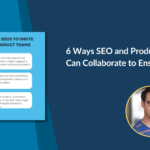
How to Use Website Conversion Rate Optimization to Boost Your Bottom Line
What is Conversion Rate Optimization?
Website conversion rate optimization is the process of increasing the percentage of people who take any number of desired actions on your website. Desired actions may vary from company to company.
However, they typically involve purchasing a product or service, clicking the “Add to Cart” button, subscribing to newsletters, filling out forms, or clicking on links.
If you can increase the percentage of users who take these actions, Google will promote your site. As a result, your monthly visitors will increase and you will increase your profits.
Converting your website visitors into prospects, leads and ultimately customers or customers is best accomplished by implementing a solid conversion rate optimization process.
Here we look at best practices for conversion rate optimization.
8 Effective Strategies to Optimize Website Conversion Rate
Use a CRO scheduler
Using a CRO scheduler is one of the best things you can do to improve your conversion rate optimization. It can be overwhelming to begin the process of improving conversion rate optimization. However, using a CRO scheduler makes it much easier to manage everything. You can plan things ahead so you know what to do throughout the month.
There are several CRO schedulers that companies can purchase. They guide you through the essential steps to improve conversion rates.
Track data about how users interact with your website
Before you take any action to improve your website’s conversion rate, you need data about how website visitors interact with your website. You need to know the percentage of people taking the actions you want before making any adjustments. This number will establish a baseline and help you determine if your changes are helpful.
Fortunately, your website builder should provide you with data for analysis. For example, you can view analytics that show you page views, click-through rates, and other important data. Additionally, most website builders allow you to purchase add-ons to gain access to more detailed data.
Implement live chat
Unfortunately, many cases of failed conversions are due to users not knowing where to go. Most people do not visit websites without a reason. They visit a website because they need something, be it a product or information.

If they click away without performing a desired action, in most cases this is a website error. Therefore, it is important to have systems that help users find what they need.
One of the easiest things to implement is live chat. Live chat is a service on many websites that allows customers to speak directly to a customer service representative in real time. If you want to implement live chat, you need a customer service representative who is available 24/7 to answer questions.
Take action to build trust with your customers
A major hurdle for new websites and businesses with customers is trust. People are more likely to buy products that are similar to those you have on sites like Amazon because they trust them. When you have a new website, you must make every effort to build trust with customers. They won’t buy your products if they don’t trust your website.
Unfortunately, trust cannot be built overnight. You have to build it up over time. However, there are things you can do to build trust in concrete ways.

In particular, adding money-back guarantees to your products is a great way to build trust. When people know they will get their money back if the product doesn’t work, they’re more likely to buy it because they’re not taking the risk.
You can also update website content regularly, avoid spam links and make your website more user-friendly. If your website looks like it hasn’t been touched in years, chances are people won’t trust it. While you might think that updating your blog doesn’t matter, it has more of an impact than you might think.
Send abandoned cart emails
Almost everyone has added something to their shopping cart on a website, only to abandon it without checking out. The reason people do this varies. Someone might decide not to purchase the item at the last minute, or they might have been pulled away from their computer before checking out. Regardless of the reason, this item will remain in the cart until manually removed.
As a site owner, you should be able to see everyone’s shopping carts. This is how you can launch email campaigns and remind people about abandoned carts.
Many people will ignore your email, but you’d be surprised how many people will remember that they need the item they left in their shopping cart. Sending this email costs you nothing and should increase your conversion rate.
Link to positive reviews of your website and products
Another positive thing you can do to improve conversion rate optimization is link to positive reviews of your website and products. 89% of customers read online reviews before making a purchase. Therefore, it is important to show your positive reviews.
We recommend linking to positive reviews of your site as a whole on your home page. This immediately shows new customers that they can trust your website. Next, you can provide links to customer reviews for each product or service that users can purchase on each product’s landing page.
You can link to review sites like Yelp or install a review system directly on your website. Both systems should work fine. However, if you own a new website, showing reviews from third-party websites can increase your credibility.
Add strong CTAs
One of the best tools available to you as a website owner is the call to action (CTA). Typically, you include a CTA at the end of an article or blog post. It asks users to do something else on the website. For example, you can tell users to click a link if they are interested in similar topics. Alternatively, you could provide links to products related to the item.
While we’ve said that calls-to-action are typically found at the end of articles, they don’t have to be limited to this area. CTAs that appear earlier on your page are likely to be more effective. Many users don’t scroll to the bottom of the page, so site owners who leave their calls-to-action to the bottom have a lower conversion rate.
Optimize your website for mobile devices
The last thing we want to discuss is the importance of optimizing your website for mobile devices. Although a significant portion of your user base will find your site on their computers, mobile users also make up a significant percentage.
As time goes by, more and more people are browsing the web on their mobile devices. As a result, a larger percentage of users will find and use your website on mobile. However, if your website isn’t mobile-friendly, people will quickly click away.
When mobile users almost always click away, your conversion rate drops. Therefore, it is important to optimize your website for mobile devices.
Final Thoughts
Conversion Rate Optimization is critical to the success of any website. You need your users to take the actions they want to have long-term success. While it’s difficult to get a website up and running, there are several things you can do to improve your website’s conversion rate. Above are just a few steps to increase your conversion rates.














